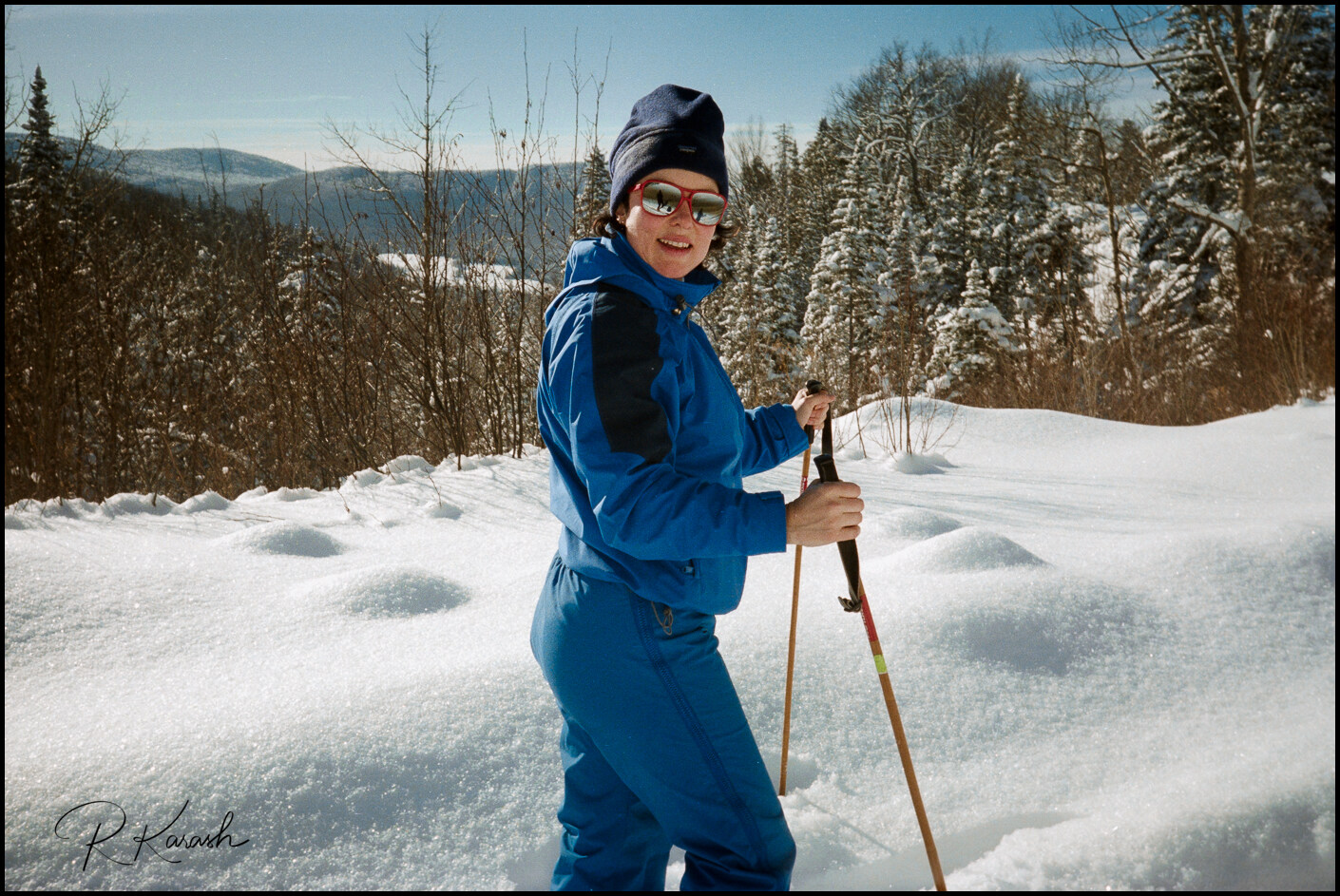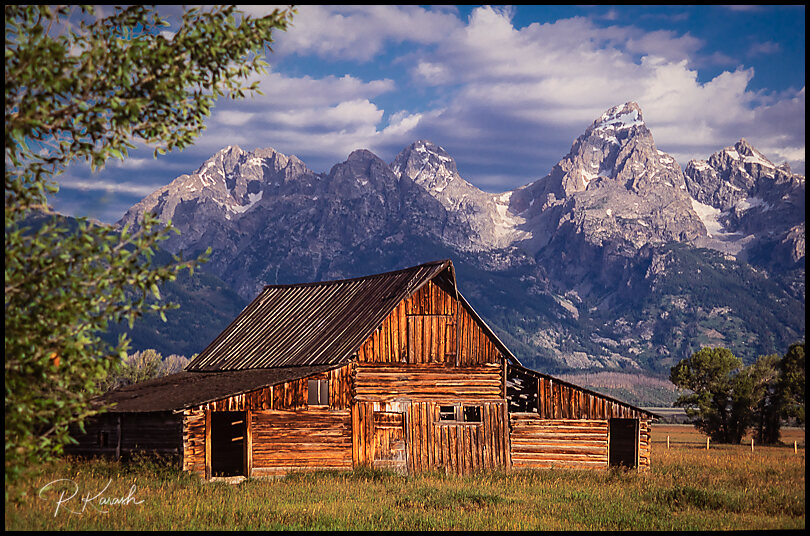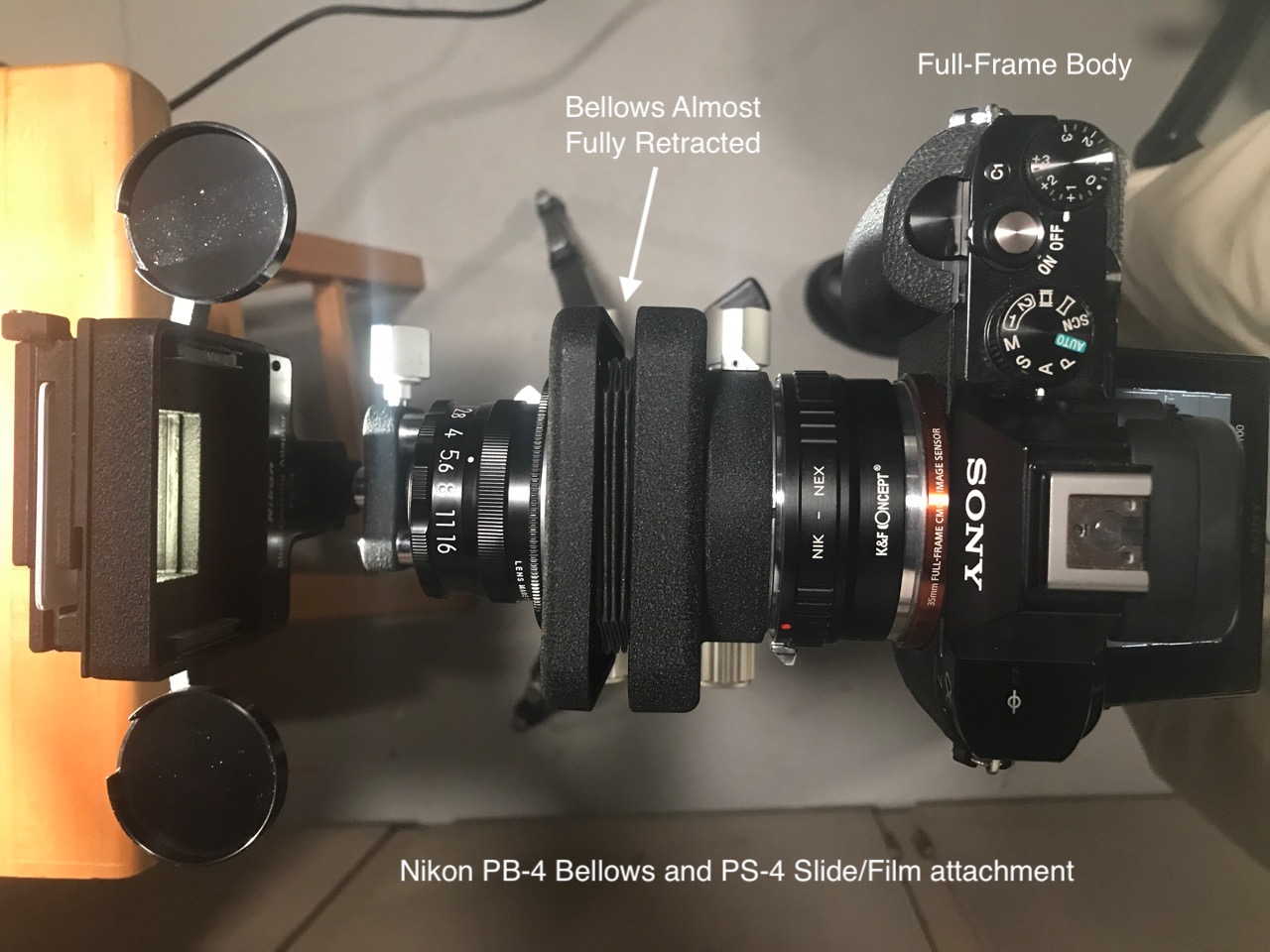Looking for thoughts and expertise on this question: What's limiting image qual in Cam-Scans?
My attention is on cam-scan from 35mm.
My updated list of factors:
- Image detail on the film? (Film, taking lens, technique)
- Copy lens
- 24MPx ... Would more pixels improve?
- Sensor capability (Bayer design, color capability)
- Film flatness
- Technique in camera-scan (focusing, choice of aperture)
- Cam-scan setup (alignment, vibration, illumination)
- Software (e.g. negative inversion)
And, for any of this, how would we know? What comparisons would give us some answers?
Stated another way, what would have to change to get better files from film exposures?
My observations:
- I'm getting better files and better prints now than back in the old days.
- 50MPx with good lens shows 50% more resolution on USAF test target, so lens seems good to 50MPx
- 50MPx shows grain only slightly more clearly, many say "no difference", and
- 50MPx shows little advantage in image detail, so 24MPx good enough for now
- Good lenses are much better than poor lenses
- Really good macro and copy lenses are best at f/4, but given film curvature, f/8 is usually better overall tradeoff of DOF vs diffraction loss. (The exquisite copy lens from CoolScan 8000 is f/3; I can't get negatives or slides flat enough to take advantage of it; with this lens, I'll do focus stacking.) With better negs/slides and better flatness, I think my best lenses could delivery more image quality.
- Good technique and setup are critical. alignment, free of vibration, good back-light
- One shot with right exposure is enough for negatives; some slides benefit from HDR
- Software has now advanced to be quite good for inverting color-negatives
My net: To get better images, I'd have to improve my negatives by better technique or moving to MF.
Your thoughts?







